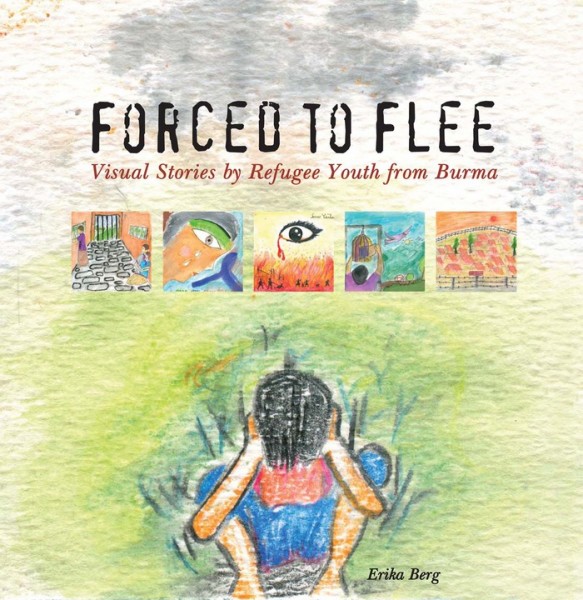 Thanks to visual-storytelling workshops, a group of child refugees from Myanmar (Burma) is now able to narrate the experience of fleeing their war-torn home. The illustrations generated in these seminars serve as powerful teaching aids in understanding how civil war and ethnic conflict have ravaged the country for the past several decades.
Thanks to visual-storytelling workshops, a group of child refugees from Myanmar (Burma) is now able to narrate the experience of fleeing their war-torn home. The illustrations generated in these seminars serve as powerful teaching aids in understanding how civil war and ethnic conflict have ravaged the country for the past several decades.
With help from family and friends, American author Erika Berg conducts these workshops for two reasons: promoting peace in Myanmar and providing therapy to traumatized refugees. Her seminars have produced more than 200 paintings, which will soon be compiled in a book, titled “Forced to Flee: Visual Stories by Refugee Youth from Burma.” Berg is hoping to publish the book using Kickstarter funding.
There are more than 120,000 refugees living today in camps along the Thailand-Myanmar border. Meanwhile, over 100,000 ethnic Kachin and Shan still live in camps for internally displaced persons. A military dictatorship has ruled Myanmar since 1962. In recent years, however, the country witnessed political reforms that brought elections, the release of some political prisoners, and the establishment of a military-backed civilian government.
The roots of the ethnic conflict remain unresolved, however, fueling what is still the world’s longest-running civil war. There are several peace efforts now underway to promote national reconciliation, but local wars continue across the country. Elections next year will be crucial for the fragile peace process.
In the meantime, hundreds of thousands of villagers are still trapped in refugee camps, and the intermittent clashes between the army and the rebels displace more people still.
In her volunteer work, Berg learned that “every refugee has a haunting, humbling, and inspiring story to share.” In an interview with the Burma Study Center, she explains:
Refugee youth who participate in the visual storytelling workshops quickly realize that they aren’t simply victims. They are survivors and witnesses whose life stories deserve—and need—to be heard.
Berg says the book she's compiling can help spread awareness about peace advocacy in Myanmar:
‘Forced to Flee’ illustrates that the emotions conveyed and evoked by a single narrative image can tell a story of a thousand words, open hearts and build bridges of understanding. In this book, refugee youth harness the power of narrative art to personalize human rights issues and promote a just and inclusive peace in Burma.
Drawn into their inner worlds, we gain a child’s eye-view of what it’s like to be forced to flee one’s homeland and live in exile, haunted – and empowered – by traumas of the past.
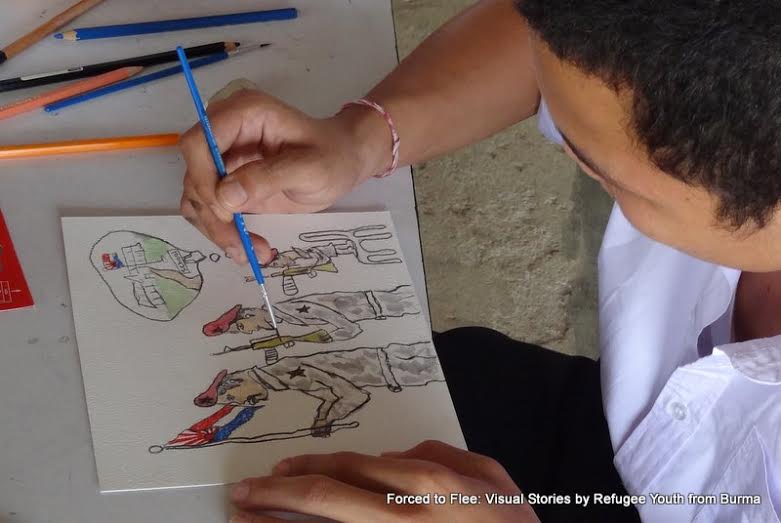
A young refugee during a visual storytelling workshop.
Below are some illustrations made by the young refugees:
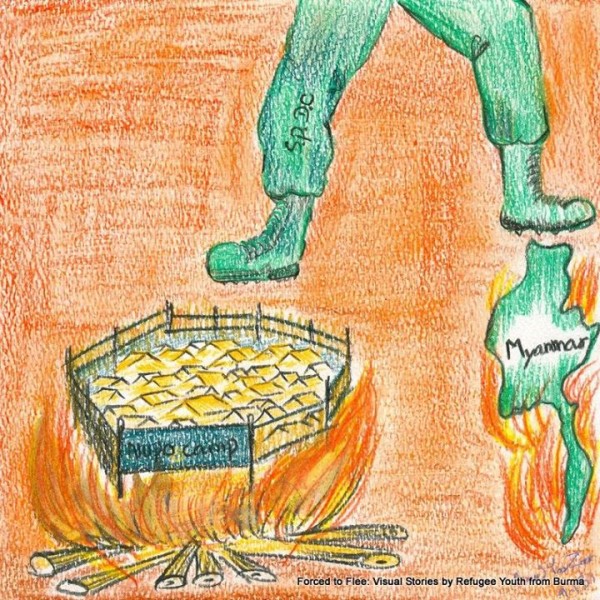
The child refugee who painted this says he felt “as if he was being watched by Burma’s then military junta,” even after leaving the country.
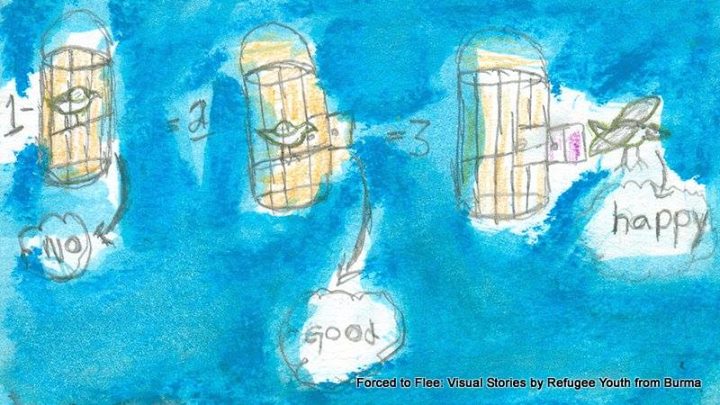
“The visual story was painted by an undocumented Chin migrant boy in a textile factory […]. [it is a] picture of the boy's dream (which came true).”
It honors the visual narratives of youth, tells their stories of injustice and atrocity, and offers us a window into possibilities for reparation and redemption for these young survivors. Most of all, it reminds us how children’s art provides a compelling, personal and often profound worldview their life experiences as well as another way of knowing their truths.
Naw K'nyaw Paw of the ethnic Karen Women's Organization wrote that the book “captures the struggles, portrayed by refugee youth who experience them daily.” Poet May Ng also speaks praise:
Never before have I seen such an intense and credible portrait of the journey of refugees from Burma. This is a magnificent work, larger than Burma’s democracy movement and the inter-ethnic conflict. Its message is universal.
Adults like to read stories to children, but there are times when we should listen to what children have to say, particularly when it concerns their feelings and experiences in war. The visual art created by Myanmar's youngest refugees is one of these opportunities to let the kids do the talking.


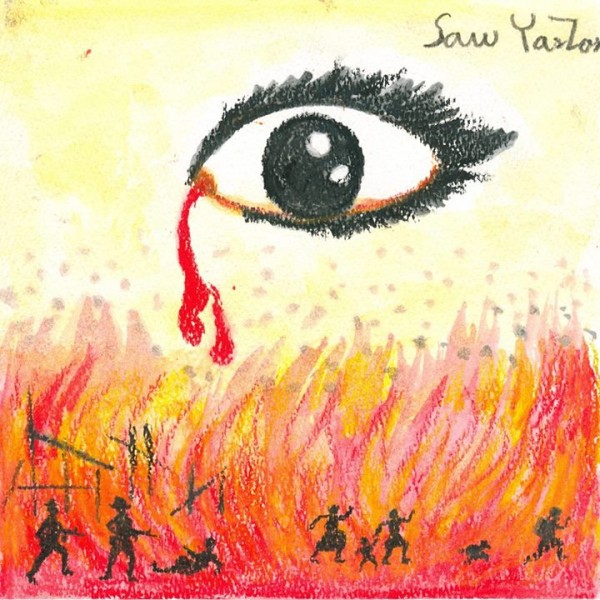
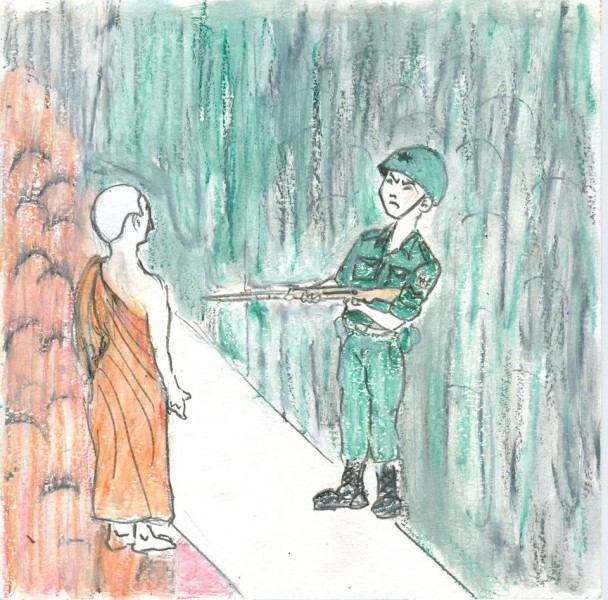
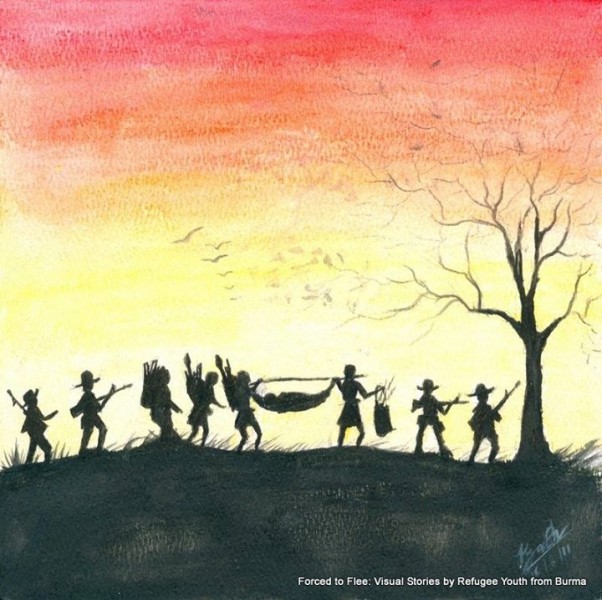







7 comments
Thank you for your thoughtful and enlightening article!